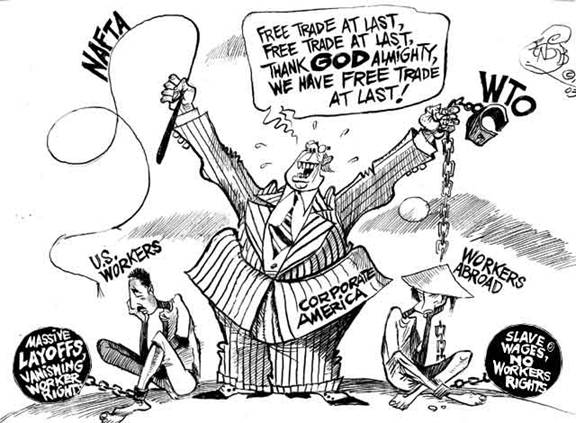Administrative Barriers to Trade
Syllabus: Describe administrative barriers that may be used as a means of protection.Administrative protectionism occurs when rules and regulations make importing certain goods more difficult than they otherwise would have been thus reducing imports by putting their costs up. Administrative barriers become more significant as free trade organisations reduce tariffs, quotas and subsidies. Examples are:
- Customs procedures - bureaucracy etc
- Technical regulations, standards, etc. - for example for the purpose of consumer protection, health protection, protection of the environment, etc
- Veterinary and phytosanitary measures - barriers based on health and safety regulations
- Restrictions on access to primary products - for example in the form of export levies (taxes) that drive up prices artificially or special export prices that are higher than the price of the same primary products for use in national processing industries
- Insufficient protection of intellectual property rights - both with respect to the scope of protection and with respect to the possibilities of legal protection. This includes, for instance, protection of patents, copyrights, trademarks and geographical indications of origin
- Barriers to trade in services - for example in the form of discriminatory conditions
- Restrictions on access to investment - for example through national participation requirements or restrictions on access to repatriation of profits
- Unfair application of state aid and other forms of subsidies
Arguments for protectionism
Syllabus: Discuss the arguments in favour of trade protection, including:- the protection of domestic jobs,
- national security,
- protection of infant industries,
- the maintenance of health, safety and environmental standards,
- anti-dumping and unfair competition,
- a means of overcoming a balance of payments deficit and
- a source of government revenue.
 Governments use the following arguments to justify protectionism:
Governments use the following arguments to justify protectionism:
- To safeguard domestic employment - protectionist policies reduce the level of imports and increase aggregate demand [AD = C + I + G + (X-M)], resulting in a higher level of national output and employment.
- To protect strategic industries - a particular product or industry might be of strategic importance to a country, e.g. agriculture or coal or defence, and protectionism may be justified on the grounds that it is keeping alive an industry which plays a vital part in the security of the economy.
- To safeguard infant industries - The new industries need some protection from the power of already established competitors to be able to grow and achieve economies of scale.
- To prevent dumping - which is where economies sell goods in overseas markets at a price below the cost of production. Domestic consumers pay more than those buying overseas. Such low prices are part of a policy to destroy rivals in export markets.
- To correct balance of payments disequilibrium - as imports are discouraged, and exports encouraged, the balance of payments improves.
- Source of government revenue - where protectionism takes the form of a tariff, this will also raise revenue for the government, like any other tax.
- To prevent labour exploitation in developing economies - preventing import of goods produced by exploiting cheap labour in developing countries will prevent this labour exploitation. However, it might also reduce export income and job opportunities for some of the poorest economies in the world.
- To enable a developing country to diversify - Many developing countries are heavily dependent on exports of primary commodities. This can leave them very exposed to changes in international commodity prices. If they want to diversify and develop new export revenue streams, they may need to protect these new industries from full exposure to international competition for a while.


Question 1
Discuss the effects of free trade on:
- US corporations
- US workers
- workers abroad in developing countries.
Question 2
Suggest what the cartoonist believes about the role of NAFTA and WTO.

For this unit it is vital to be aware of up to date examples and issues. A useful way to find these is to search the Biz/ed In the News archive. You can do this in the window below, or right-click on the link and choose 'Open in a new window'.
Try searching on terms like:
- Protection
- Protectionism
- Trade
- Tariff
- Quota
